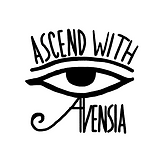Enter the World of Meditation
- Katie Kell

- Apr 17, 2019
- 4 min read
Hello again, friends! I’d like to start off by saying thank you to all of you who are taking the time to check out my blogs and thank you to those of you sending me love and support. Ya’ll are AMAZING!
I decided that meditation should be the next topic for my blog considering it’s one of the single most important tools to help you discover your true self, change old, limiting thought patterns and beliefs that may be holding you back from living your fullest life, and self-heal. People ask me all the time to “teach” them how to meditate and this request always leaves me feeling puzzled about how to reply. There are so many different ways to meditate and most people change their meditation methods as their spiritual development enhances. The most important rule of thumb when it comes to meditation is DO WHAT MAKES YOU FEEL COMFORTABLE. I’ll get more into the act of it in a second, but first, let’s cover what meditation does to your brain. According to Scientific American’s website, “MRI scans show that after an eight-week course of mindfulness practice, the brain’s “fight or flight” center, the amygdala, appears to shrink. This primal region of the brain, associated with fear and emotion, is involved in the initiation of the body’s response to stress”. So basically, your brain physically changes in order to help your mind and body cope with stress. More so, you begin to stress about less. This is so incredibly important in the healing process, considering stress leads to many chronic illnesses. On top of that, the frequency of brain waves that are being used during meditation changes from Beta waves (which we are usually in through most of our waking day) to Alpha, Theta, and maybe even Delta waves (if you’re on Tibetan Monk status). This has been studied and can be read by an, EEG or electroencephalograph. Here are how the different frequencies of brain waves affect us:
1. Gamma State: (30 — 100Hz) This is the state of hyperactivity and active learning. Gamma state is the most opportune time to retain information. This is why educators often have audiences jumping up and down or dancing around — to increase the likelihood of permanent assimilation of information. If over stimulated, it can lead to anxiety.
2. Beta State: (13 — 30Hz) Where we function for most of the day, Beta State is associated with the alert mind state of the prefrontal cortex. This is a state of the “working” or “thinking mind”: analytical, planning, assessing and categorizing.
3. Alpha State: (9 — 13Hz) Brain waves start to slow down out of thinking mind. We feel more calm, peaceful and grounded. We often find ourselves in an “alpha state” after a yoga class, a walk in the woods, a pleasurable sexual encounter or during any activity that helps relax the body and mind. We are lucid, reflective, have a slightly diffused awareness. The hemispheres of the brain are more balanced (neural integration).
4. Theta State: (4 — 8Hz) We’re able to begin meditation. This is the point where the verbal/thinking mind transitions to the meditative/visual mind. We begin to move from the planning mind to a deeper state of awareness (often felt as drowsy), with stronger intuition, more capacity for wholeness and complicated problem solving. The Theta state is associated with visualization.
Meditation places you in the still realm of the present moment. When you are fully aware of the present moment there is no past or future. This is the perfect place to remove unhealthy societal structures that we have been raised with, limiting beliefs, and fears that hold us back from our dreams. Meditation can literally rewire the neural pathways you have created as you’ve been growing up. And believe it or not, our thoughts, beliefs, and emotions help shape our own reality. WE are the creators of our lives, WE choose how we want to live. So if meditation helps you to change your thought patterns and beliefs, it is also a great tool to help you change your life.
So how do you actually meditate? Well… that depends on who you are and what techniques you feel drawn towards. I always suggest to start your practice in Nature. When you’re surrounded by plants that are producing good, clean oxygen then you can breathe more easily. And your breath is extremely important in meditation. Your breath is what connects you to your Soul, or Higher self. Your Higher Self always knows what’s best for you and is eager to connect with you. I will be posting some guided meditations soon, but until then google some meditation techniques and check out some guided meditations on youtube! Find one that resonates well with you and start on your journey to transcendent states and higher consciousness. Good luck friends!
The goal of meditation isn’t to control your thoughts, It’s to stop letting your thoughts control you.
References:
Ireland, Tom. “What Does Mindfulness Meditation Do to Your Brain?” Scientific AmericanBlog Network, 12 June 2014, blogs.scientificamerican.com/guest-blog/what-does-mindfulness-meditation-do-to-your-brain/.
Turner, Ashley. “How Meditation Changes Your Brain Frequency.” Mindbodygreen, Mindbodygreen, 5 Feb. 2014, http://www.mindbodygreen.com/0-12491/how-meditation-changes-your-brain-frequency.html.

.png)



Comments